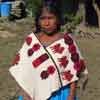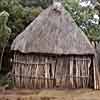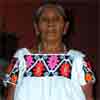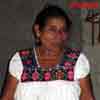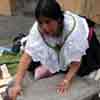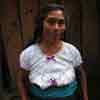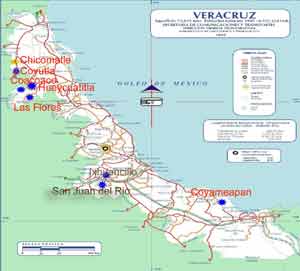 |
 |
 |
 |
|
|||||||||||||||||||||||||||||||||||||||||||||||||||||||||||||||||||||||||||||||
|
NAHUAS OF VERACRUZ STATE In 2005, the state of Veracruz was home to over 605,000 people who spoke one or more indigenous language. Almost 319,000 of these people spoke dialects of the Náhuatl language - the most widely spoken Indian language in Mexico. These Nahua people live in three different regions of Veracruz and do not form a homogenous ethnolinguistic group. The largest number of Nahua speakers live in the northern part of the state. A second large group lives in the mountains of central Veracruz near Córdoba and Orizaba. The smallest population of Nahuas lives in the far southern part of the state near the Isthmus of Tehuantepec. The narrow state of Veracruz runs along Mexico's Gulf Coast for 690 kms. The tropical plains and low hills of the coast quickly give rise to the slopes of the Sierra Madre Oriental Mountains. Major rivers flow from the highlands of Central Mexico to the Gulf through the Sierra Madre. The temperate valleys cut by these rivers have channeled people from the highlands to the coast since ancient times. Beginning around 1200 AD Náhuatl speaking people began moving into what is modern day Veracruz, settling among the Huastecs, Totonacs, Popolucas, and other indigenous groups who lived, and still live, in the region. The Nahuas of northern Veracruz live in two neighboring regions called the Huasteca and Totonacapan. The Huasteca of Veracruz is the home of the largest Nahua population in the state. Nahuas live in 20 different municipios, and are part of a much larger group of Náhuatl speakers who occupy portions of the neighboring states of Hidalgo and San Luis Potosí. Otomí people and Maya speaking Huastecs also live in this part of Veracruz and have influenced aspects of local Nahua culture. Just south of the Huasteca is the area known as Totonacapan which was the ancestral home of the Totonac people. Totonacapan extends into the neighboring state of Puebla, and Totonacapan Nahuas are part of the larger Nahua group that lives in northern Puebla. In Veracruz, there are Nahua speakers in 10 municipios. Many Totonacs also live in this area, with whom the Nahuas have close ties, as do Tepehuas, and Otomís. In central Veracruz, the Nahuas of the Sierra Zongolica are related to the Náhuatl speaking people who live in the Sierra Negra and Tehuacán Valley regions of southern Puebla. This is a rugged and historically isolated region. Elevations in the 14 municipios where Nahuas live range from 500 to 2400 Mts. Traditionally, many Nahua men and boys left the area for at least part of the year to find agricultural work in lowlands of Veracruz or the Tehuacán Valley. Today, many women are doing the same thing. The Istmo de Veracruz, or Olmecapan is the home of the smallest Nahua populations in the state. Though they reside in 27 municipios and speak 3 different dialects. The largest numbers of Náhuatl speakers live in the Sierra de Santa Marta in the municipios of Pajapan and Mecayapan. Long established trade routes pass through this area from Mexico to Central America, and historians believe that the Náhuatl language here arrived with the early traders and with military expeditions that followed in the wake of the traders. The Popoluca people also occupy this region and their culture has influenced many aspects of Nahua life. Elevations in Veracruz range from sea level to 5,746 Mts. - the highest point in Mexico. Most Nahuas live in the mountains or hilly areas and make their living by small-scale farming. Besides the traditional staples of maize, beans, chiles, and squash, farmers may grow crops ranging from vanilla to apples. Most families keep domestic animals and fowl, and many supplement their diet through fishing, hunting and gathering. Pottery, baskets, furniture, and handwoven clothing are produced in some communities. There are opportunities for wage labor in commercial agriculture, the oil and gas industry, and large-scale livestock operations. Still, many Nahua people migrate to Mexico's big cities or to the US to find work. The traditional clothing of Nahua women in Veracruz to differs greatly from region to region, as the photos in this gallery show. Because of geographic isolation, the women of a particular area may dress more like their neighbors who belong to other ethnic groups than like Nahua women from other parts of the state. |
||||||||||||||||||||||||||||||||||||||||||||||||||||||||||||||||||||||||||||||
|
|||||||||||||||||||||||||||||||||||||||||||||||||||||||||||||||||||||||||||||||
